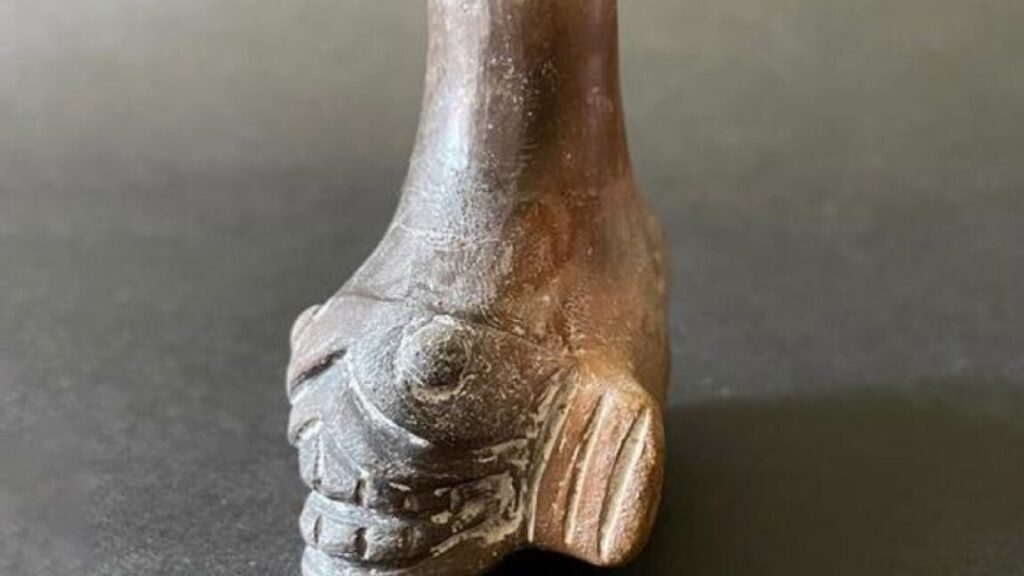
Aztec death whistles don’t fit into any existing Western classification for wind instruments; they seem to be a unique kind of “air spring” whistle, based on CT scans of some of the artifacts. Sascha Frühholz, a cognitive and affective neuroscientist at the University of Zürich, and several colleagues wanted to learn more about the physical mechanisms behind the whistle’s distinctive sound, as well as how humans perceive said sound—a field known as psychoacoustics. “The whistles have a very unique construction, and we don’t know of any comparable musical instrument from other pre-Columbian cultures or from other historical and contemporary contexts,” said Frühholz.
A symbolic sound?
Human sacrifice with original skull whistle (small red box and enlarged rotated view in lower right) discovered 1987–89 at the Ehecatl-Quetzalcoatl temple in Mexico City.
Credit:
Salvador Guillien Arroyo, Proyecto Tlatelolco
For their acoustic analysis, Frühholz et al. obtained sound recordings from two Aztec skull whistles excavated from Tlatelolco, as well as from three noise whistles (part of Aztec fire snake incense ladles). They took CT scans of whistles in the collection of the Ethnological Museum in Berlin, enabling them to create both 3D digital reconstructions and physical clay replicas. They were also able to acquire three additional artisanal clay whistles for experimental purposes.
Human participants then blew into the replicas with low-, medium-, and high-intensity air pressure, and the ensuing sounds were recorded. Those recordings were compared to existing databases of a broad range of sounds: animals, natural soundscapes, water sounds, urban noise, synthetic sounds (as for computers, pinball machines, printers, etc.), and various ancient instruments, among other samples. Finally, a group of 70 human listeners rated a random selection of sounds from a collection of over 2,500 samples.
The CT scans showed that skull whistles have an internal tube-like air duct with a constricted passage, a counter pressure chamber, a collision chamber, and a bell cavity. The unusual construction suggests that the basic principle at play is the Venturi effect, in which air (or a generic fluid) speeds up as it flows through a constricted passage, thereby reducing the pressure. “At high playing intensities and air speeds, this leads to acoustic distortions and to a rough and piercing sound character that seems uniquely produced by the skull whistles,” the authors wrote.